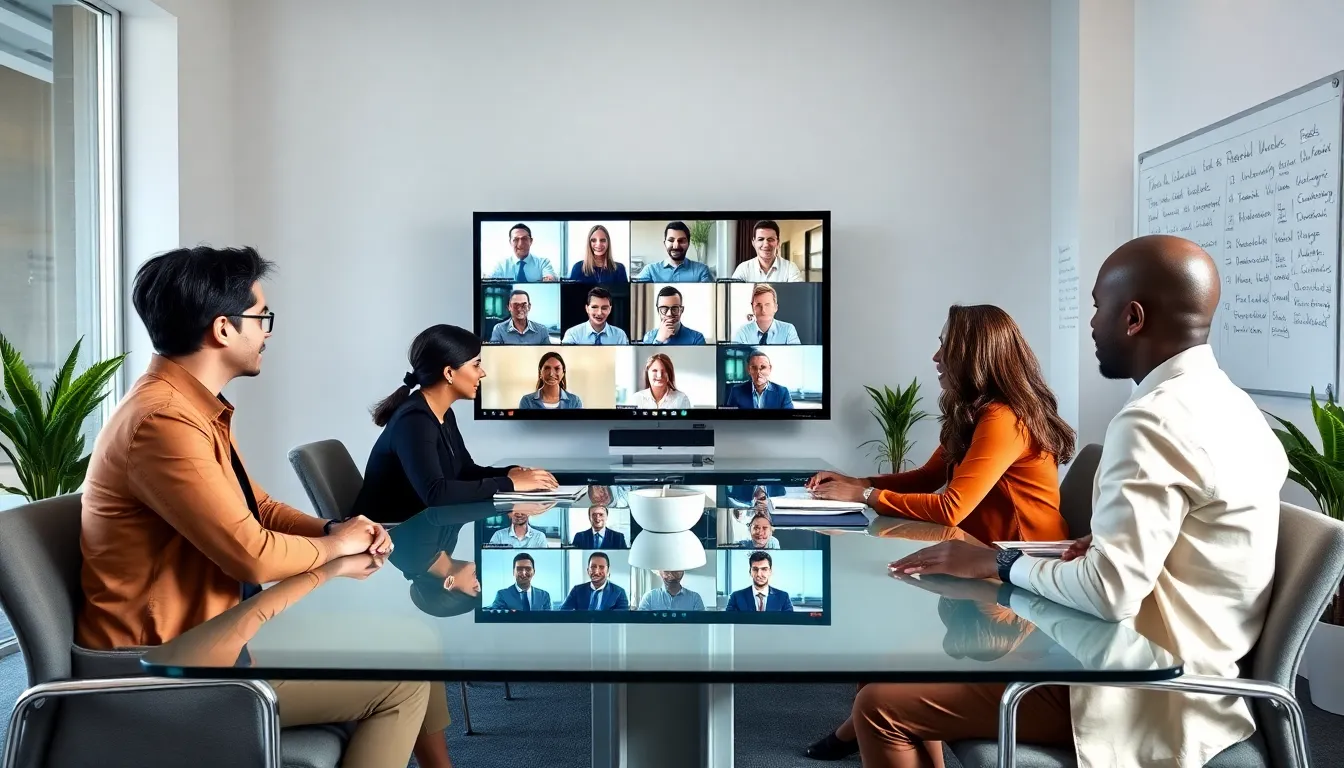Table of Contents
ToggleRemote work in the federal government? It might sound like a futuristic concept, but it’s a reality that has rapidly evolved over the years. Imagine trading in cubicles for comfy home offices, yes, please. While the notion might evoke images of employees lounging in pajamas, the truth is far more complex and nuanced. In this text, we dive deep into the federal government’s remote work policy, exploring its history, current landscape, and what the future holds. So, grab your coffee, settle into your favorite chair, and let’s unpack this essential topic.
Overview of Remote Work Policies

Historical Background of Remote Work in the Federal Government
Remote work didn’t just pop up overnight: it has a rich history within the federal landscape. Initially, telecommuting was a niche concept, limited to a few experimental initiatives. In the late 1990s, the government began to recognize its potential benefits, adopting pilot programs aimed at increasing flexibility and reducing overhead costs. Fast forward to the 2010s, cities were buzzing about telework as a viable option to attract talent and improve employee satisfaction. Then, the COVID-19 pandemic turned the workplace on its head, propelling remote work from a curious experiment to a necessity.
Recent Developments and Trends
The shift to remote work brought about significant changes. Recent policies reflect a more integrated approach, focusing on sustainability, employee well-being, and productivity. More federal agencies are now implementing flexible schedules and hybrid models to foster job satisfaction and retain top talent. The trend is clear: remote work is here to stay, and the federal government is taking steps to adapt accordingly.
Key Components of the Federal Remote Work Policy
Eligibility Criteria for Remote Work
One of the foundational elements of the federal remote work policy is the eligibility criteria. Not just anyone can work from home: specific roles and responsibilities are taken into account. Generally, employees in positions that allow for independent tasks and digital communication tend to qualify. The aim is to balance operational needs with the flexibility employees crave.
Technology Requirements and Support
To ensure success in remote settings, technology plays a pivotal role. The federal government stipulates that employees must have access to certain technologies and secure networks. Agencies are a hotspot for IT investments, with many providing essential tools and support to help seamless remote work. Virtual private networks (VPNs), cloud storage, and collaborative software are among the top tools that help keep work efficient and secure.
Work-Life Balance and Productivity Considerations
Achieving a good work-life balance is crucial. The federal government recognizes this by promoting policies that prioritize well-being alongside productivity. Flexible hours and the ability to manage personal responsibilities are encouraged, fostering an environment where remote workers can thrive. It’s not just about getting the job done but also about maintaining a healthy balance that supports both work and personal life.
Challenges and Concerns Surrounding Remote Work
Security and Data Privacy Issues
While remote work offers numerous benefits, it also comes with a set of challenges. Chief among these are security and data privacy concerns. With remote access, sensitive information is more vulnerable to potential cyber threats. Federal agencies are implementing robust security protocols to safeguard against breaches while ensuring that employees are trained in best practices for data protection.
Management and Oversight Challenges
The shift to remote work has redefined traditional management practices. Supervising a remote workforce poses its own unique challenges, such as maintaining effective communication and monitoring productivity. Managers are now tasked with developing new strategies to lead virtual teams successfully. Regular check-ins, performance metrics, and fostering a culture of trust are essential components in overcoming these obstacles.
Future of Remote Work in the Federal Government
Impacts on Workforce Dynamics
As the federal government looks to the future, the impacts on workforce dynamics will be profound. The ability to work remotely could diversify the talent pool, allowing agencies to recruit individuals from various geographic locations. This shift may enhance creativity and innovation, as varied perspectives often lead to more comprehensive solutions. Besides, a more distant workforce can decrease the cost of office spaces, an attractive prospect for budget-conscious agencies.
Potential Policy Changes and Recommendations
Future policy changes may continue to evolve in response to the successes and challenges of remote work. Recommendations include stronger support for mental health initiatives, ongoing technology enhancements, and an emphasis on training for both employees and managers. As agencies develop these policies, they will need to balance remote work’s flexibility with accountability, ensuring that both government objectives and employee needs are met.








